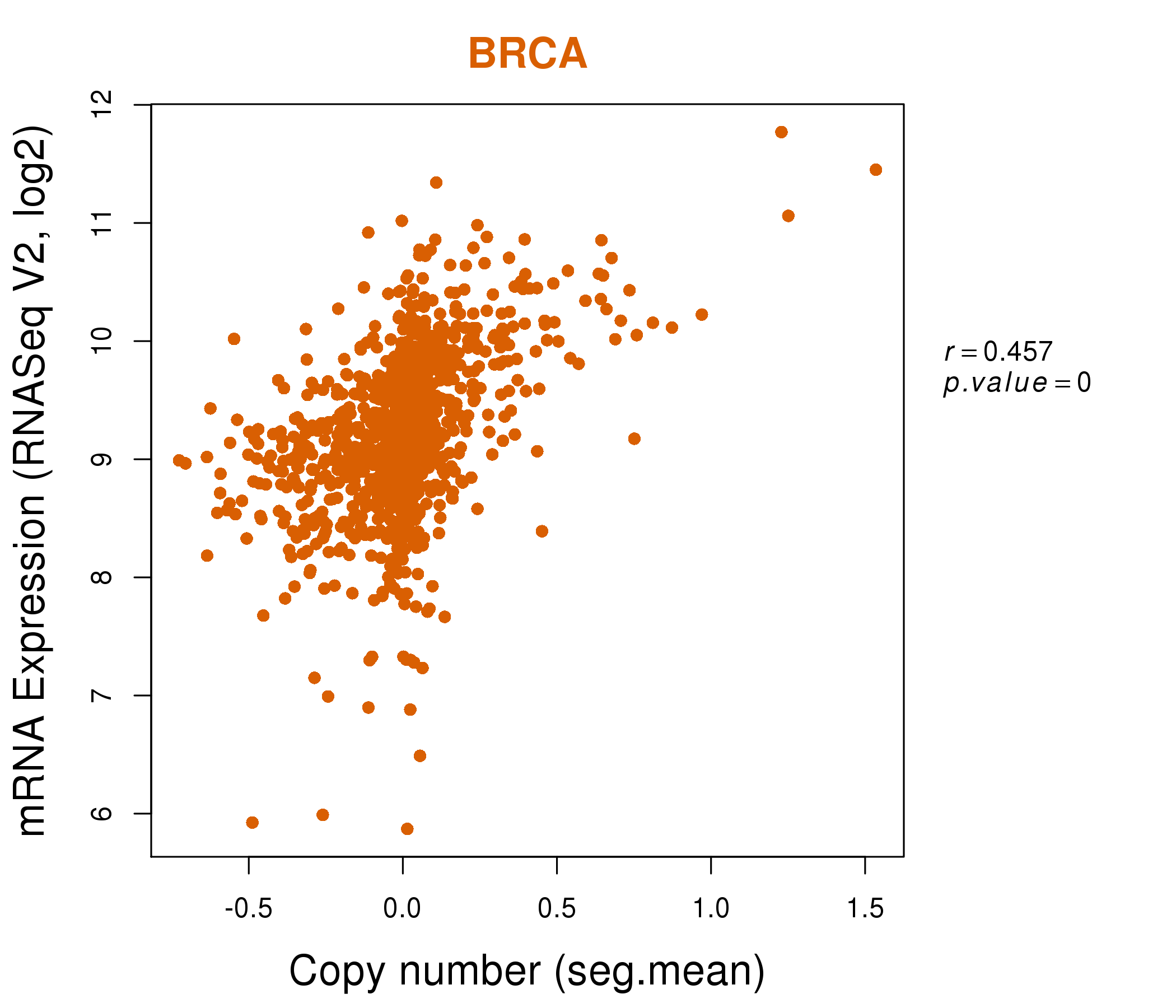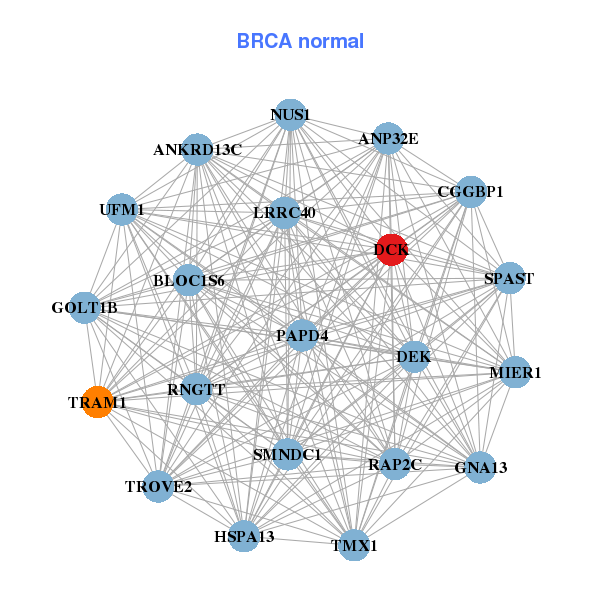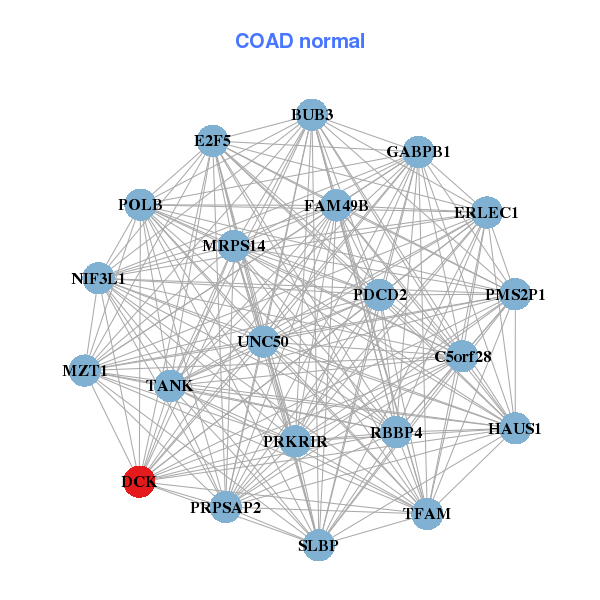|
|||||||||||||||||||||||||||||||||||||||||||||||||||||||||||||||||||||||||||||||||||||||||||||||||||||||||||||||||||||||||||||||||||||||||||||||||||||||||||||||||||||||||||||||||||||||||||||||||||||||||||||||||||||||||||||||||||||||||||||||||||||||||||||||||||||||||||||||||||||||||||||||||||||||||||||||||||||||||||||||||||||||||||||||||||||||||||||||||||||||||||||||||||||||||||||||||||||||||||||||||||||
| |
| Phenotypic Information (metabolism pathway, cancer, disease, phenome) |
| |
| |
| Gene-Gene Network Information: Co-Expression Network, Interacting Genes & KEGG |
| |
|
| Gene Summary for DCK |
| Basic gene info. | Gene symbol | DCK |
| Gene name | deoxycytidine kinase | |
| Synonyms | - | |
| Cytomap | UCSC genome browser: 4q13.3-q21.1 | |
| Genomic location | chr4 :71859264-71896629 | |
| Type of gene | protein-coding | |
| RefGenes | NM_000788.2, | |
| Ensembl id | ENSG00000156136 | |
| Description | deoxynucleoside kinase | |
| Modification date | 20141207 | |
| dbXrefs | MIM : 125450 | |
| HGNC : HGNC | ||
| Ensembl : ENSG00000156136 | ||
| HPRD : 00507 | ||
| Vega : OTTHUMG00000129908 | ||
| Protein | UniProt: go to UniProt's Cross Reference DB Table | |
| Expression | CleanEX: HS_DCK | |
| BioGPS: 1633 | ||
| Gene Expression Atlas: ENSG00000156136 | ||
| The Human Protein Atlas: ENSG00000156136 | ||
| Pathway | NCI Pathway Interaction Database: DCK | |
| KEGG: DCK | ||
| REACTOME: DCK | ||
| ConsensusPathDB | ||
| Pathway Commons: DCK | ||
| Metabolism | MetaCyc: DCK | |
| HUMANCyc: DCK | ||
| Regulation | Ensembl's Regulation: ENSG00000156136 | |
| miRBase: chr4 :71,859,264-71,896,629 | ||
| TargetScan: NM_000788 | ||
| cisRED: ENSG00000156136 | ||
| Context | iHOP: DCK | |
| cancer metabolism search in PubMed: DCK | ||
| UCL Cancer Institute: DCK | ||
| Assigned class in ccmGDB | C | |
| Top |
| Phenotypic Information for DCK(metabolism pathway, cancer, disease, phenome) |
| Cancer | CGAP: DCK |
| Familial Cancer Database: DCK | |
| * This gene is included in those cancer gene databases. |
|
|
|
|
|
| . | |||||||||||||||||||||||||||||||||||||||||||||||||||||||||||||||||||||||||||||||||||||||||||||||||||||||||||||||||||||||||||||||||||||||||||||||||||||||||||||||||||||||||||||||||||||||||||||||||||||||||||||||||||||||||||||||||||||||||||||||||||||||||||||||||||||||||||||||||||||||||||||||||||||||||||||||||||||||||||||||||||||||||||||||||||||||||||||||||||||||||||||||||||||||||||||||||||||||||||||||
Oncogene 1 | Significant driver gene in | ||||||||||||||||||||||||||||||||||||||||||||||||||||||||||||||||||||||||||||||||||||||||||||||||||||||||||||||||||||||||||||||||||||||||||||||||||||||||||||||||||||||||||||||||||||||||||||||||||||||||||||||||||||||||||||||||||||||||||||||||||||||||||||||||||||||||||||||||||||||||||||||||||||||||||||||||||||||||||||||||||||||||||||||||||||||||||||||||||||||||||||||||||||||||||||||||||||||||||||||||||||
| cf) number; DB name 1 Oncogene; http://nar.oxfordjournals.org/content/35/suppl_1/D721.long, 2 Tumor Suppressor gene; https://bioinfo.uth.edu/TSGene/, 3 Cancer Gene Census; http://www.nature.com/nrc/journal/v4/n3/abs/nrc1299.html, 4 CancerGenes; http://nar.oxfordjournals.org/content/35/suppl_1/D721.long, 5 Network of Cancer Gene; http://ncg.kcl.ac.uk/index.php, 1Therapeutic Vulnerabilities in Cancer; http://cbio.mskcc.org/cancergenomics/statius/ |
| KEGG_PURINE_METABOLISM KEGG_PYRIMIDINE_METABOLISM REACTOME_METABOLISM_OF_NUCLEOTIDES REACTOME_PURINE_METABOLISM REACTOME_PYRIMIDINE_METABOLISM | |
| OMIM | |
| Orphanet | |
| Disease | KEGG Disease: DCK |
| MedGen: DCK (Human Medical Genetics with Condition) | |
| ClinVar: DCK | |
| Phenotype | MGI: DCK (International Mouse Phenotyping Consortium) |
| PhenomicDB: DCK | |
| Mutations for DCK |
| * Under tables are showing count per each tissue to give us broad intuition about tissue specific mutation patterns.You can go to the detailed page for each mutation database's web site. |
| There's no structural variation information in COSMIC data for this gene. |
| * From mRNA Sanger sequences, Chitars2.0 arranged chimeric transcripts. This table shows DCK related fusion information. |
| ID | Head Gene | Tail Gene | Accession | Gene_a | qStart_a | qEnd_a | Chromosome_a | tStart_a | tEnd_a | Gene_a | qStart_a | qEnd_a | Chromosome_a | tStart_a | tEnd_a |
| BG315007 | RAPGEF1 | 1 | 265 | 9 | 134454093 | 134454357 | DCK | 262 | 398 | 4 | 71888127 | 71888262 | |
| Top |
| Mutation type/ Tissue ID | brca | cns | cerv | endome | haematopo | kidn | Lintest | liver | lung | ns | ovary | pancre | prost | skin | stoma | thyro | urina | |||
| Total # sample | 1 | |||||||||||||||||||
| GAIN (# sample) | 1 | |||||||||||||||||||
| LOSS (# sample) |
| cf) Tissue ID; Tissue type (1; Breast, 2; Central_nervous_system, 3; Cervix, 4; Endometrium, 5; Haematopoietic_and_lymphoid_tissue, 6; Kidney, 7; Large_intestine, 8; Liver, 9; Lung, 10; NS, 11; Ovary, 12; Pancreas, 13; Prostate, 14; Skin, 15; Stomach, 16; Thyroid, 17; Urinary_tract) |
| Top |
|
 |
| Top |
| Stat. for Non-Synonymous SNVs (# total SNVs=24) | (# total SNVs=7) |
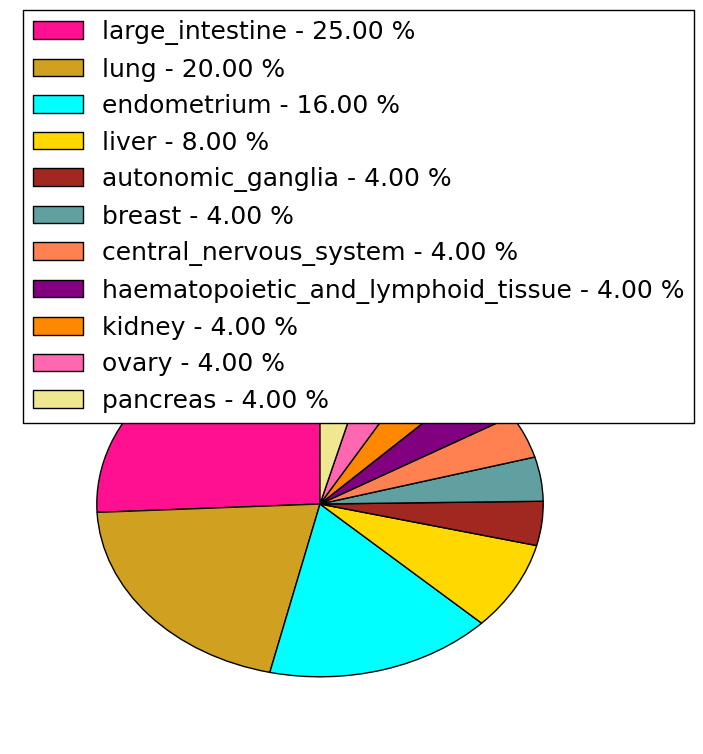 | 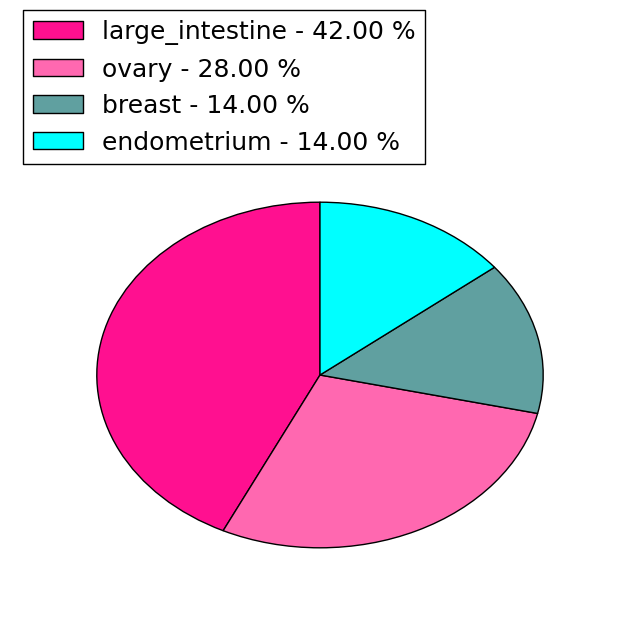 |
(# total SNVs=0) | (# total SNVs=0) |
| Top |
| * When you move the cursor on each content, you can see more deailed mutation information on the Tooltip. Those are primary_site,primary_histology,mutation(aa),pubmedID. |
| GRCh37 position | Mutation(aa) | Unique sampleID count |
| chr4:71889409-71889409 | p.Q179K | 3 |
| chr4:71888182-71888182 | p.L102L | 2 |
| chr4:71892391-71892391 | p.F225F | 2 |
| chr4:71888090-71888090 | p.T72S | 2 |
| chr4:71888092-71888092 | p.T72T | 2 |
| chr4:71889394-71889394 | p.G174R | 2 |
| chr4:71891546-71891546 | p.R188I | 1 |
| chr4:71891559-71891559 | p.R192R | 1 |
| chr4:71888183-71888183 | p.S103G | 1 |
| chr4:71891606-71891606 | p.L208R | 1 |
| Top |
|
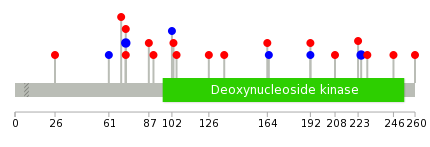 |
| Point Mutation/ Tissue ID | 1 | 2 | 3 | 4 | 5 | 6 | 7 | 8 | 9 | 10 | 11 | 12 | 13 | 14 | 15 | 16 | 17 | 18 | 19 | 20 |
| # sample | 2 | 6 | 1 | 2 | 1 | 4 | 1 | 3 | 5 | |||||||||||
| # mutation | 2 | 5 | 1 | 2 | 1 | 4 | 1 | 3 | 5 | |||||||||||
| nonsynonymous SNV | 1 | 3 | 1 | 2 | 1 | 3 | 1 | 1 | 4 | |||||||||||
| synonymous SNV | 1 | 2 | 1 | 2 | 1 |
| cf) Tissue ID; Tissue type (1; BLCA[Bladder Urothelial Carcinoma], 2; BRCA[Breast invasive carcinoma], 3; CESC[Cervical squamous cell carcinoma and endocervical adenocarcinoma], 4; COAD[Colon adenocarcinoma], 5; GBM[Glioblastoma multiforme], 6; Glioma Low Grade, 7; HNSC[Head and Neck squamous cell carcinoma], 8; KICH[Kidney Chromophobe], 9; KIRC[Kidney renal clear cell carcinoma], 10; KIRP[Kidney renal papillary cell carcinoma], 11; LAML[Acute Myeloid Leukemia], 12; LUAD[Lung adenocarcinoma], 13; LUSC[Lung squamous cell carcinoma], 14; OV[Ovarian serous cystadenocarcinoma ], 15; PAAD[Pancreatic adenocarcinoma], 16; PRAD[Prostate adenocarcinoma], 17; SKCM[Skin Cutaneous Melanoma], 18:STAD[Stomach adenocarcinoma], 19:THCA[Thyroid carcinoma], 20:UCEC[Uterine Corpus Endometrial Carcinoma]) |
| Top |
| * We represented just top 10 SNVs. When you move the cursor on each content, you can see more deailed mutation information on the Tooltip. Those are primary_site, primary_histology, mutation(aa), pubmedID. |
| Genomic Position | Mutation(aa) | Unique sampleID count |
| chr4:71892391 | p.F225F | 2 |
| chr4:71888090 | p.T72S | 2 |
| chr4:71888092 | p.T72T | 2 |
| chr4:71888183 | p.I136V | 1 |
| chr4:71892401 | p.N164T | 1 |
| chr4:71888189 | p.Q165Q | 1 |
| chr4:71892453 | p.R192L | 1 |
| chr4:71888254 | p.R192R | 1 |
| chr4:71895091 | p.I26M | 1 |
| chr4:71859630 | p.L208R | 1 |
| * Copy number data were extracted from TCGA using R package TCGA-Assembler. The URLs of all public data files on TCGA DCC data server were gathered on Jan-05-2015. Function ProcessCNAData in TCGA-Assembler package was used to obtain gene-level copy number value which is calculated as the average copy number of the genomic region of a gene. |
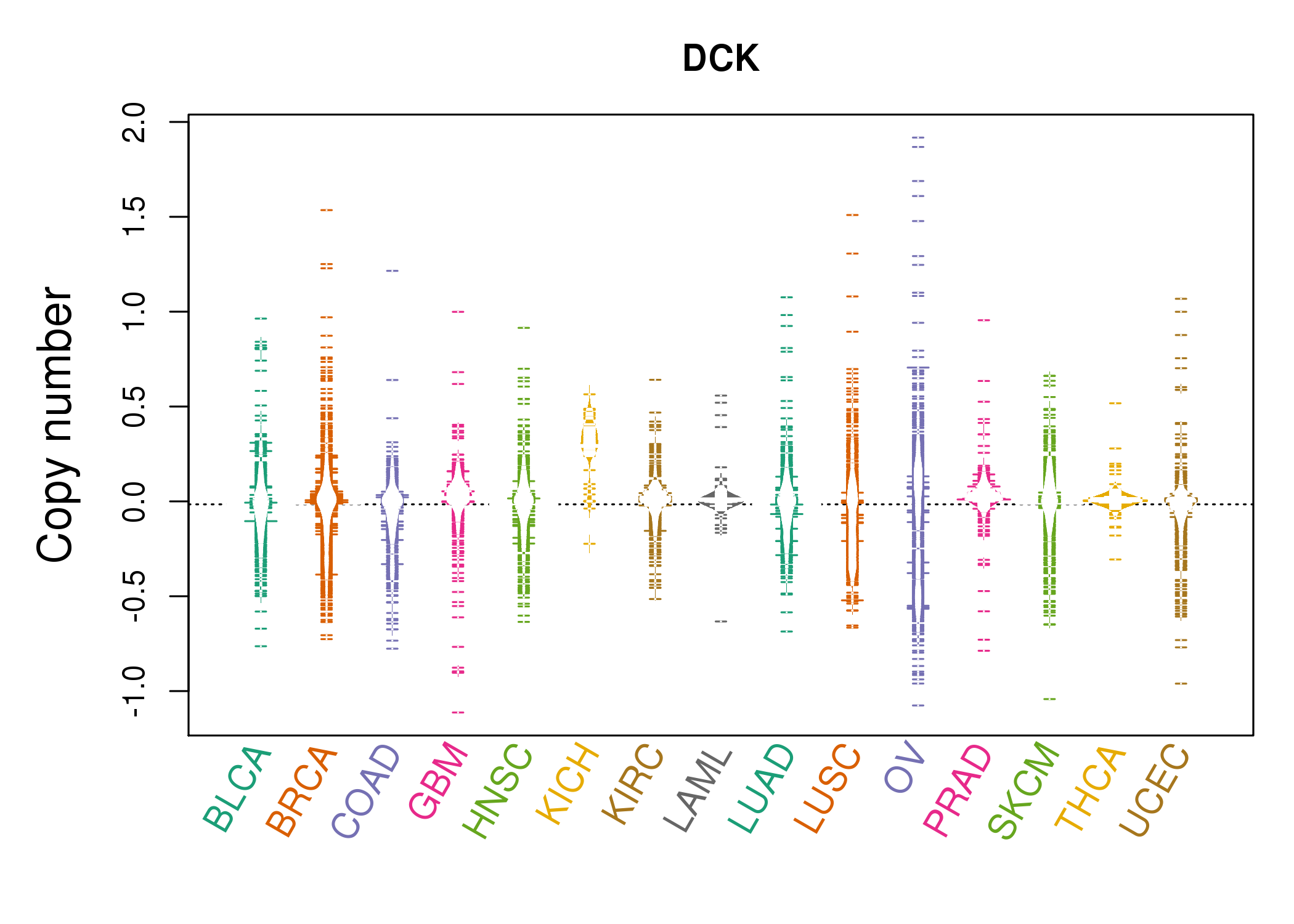 |
| cf) Tissue ID[Tissue type]: BLCA[Bladder Urothelial Carcinoma], BRCA[Breast invasive carcinoma], CESC[Cervical squamous cell carcinoma and endocervical adenocarcinoma], COAD[Colon adenocarcinoma], GBM[Glioblastoma multiforme], Glioma Low Grade, HNSC[Head and Neck squamous cell carcinoma], KICH[Kidney Chromophobe], KIRC[Kidney renal clear cell carcinoma], KIRP[Kidney renal papillary cell carcinoma], LAML[Acute Myeloid Leukemia], LUAD[Lung adenocarcinoma], LUSC[Lung squamous cell carcinoma], OV[Ovarian serous cystadenocarcinoma ], PAAD[Pancreatic adenocarcinoma], PRAD[Prostate adenocarcinoma], SKCM[Skin Cutaneous Melanoma], STAD[Stomach adenocarcinoma], THCA[Thyroid carcinoma], UCEC[Uterine Corpus Endometrial Carcinoma] |
| Top |
| Gene Expression for DCK |
| * CCLE gene expression data were extracted from CCLE_Expression_Entrez_2012-10-18.res: Gene-centric RMA-normalized mRNA expression data. |
 |
| * Normalized gene expression data of RNASeqV2 was extracted from TCGA using R package TCGA-Assembler. The URLs of all public data files on TCGA DCC data server were gathered at Jan-05-2015. Only eight cancer types have enough normal control samples for differential expression analysis. (t test, adjusted p<0.05 (using Benjamini-Hochberg FDR)) |
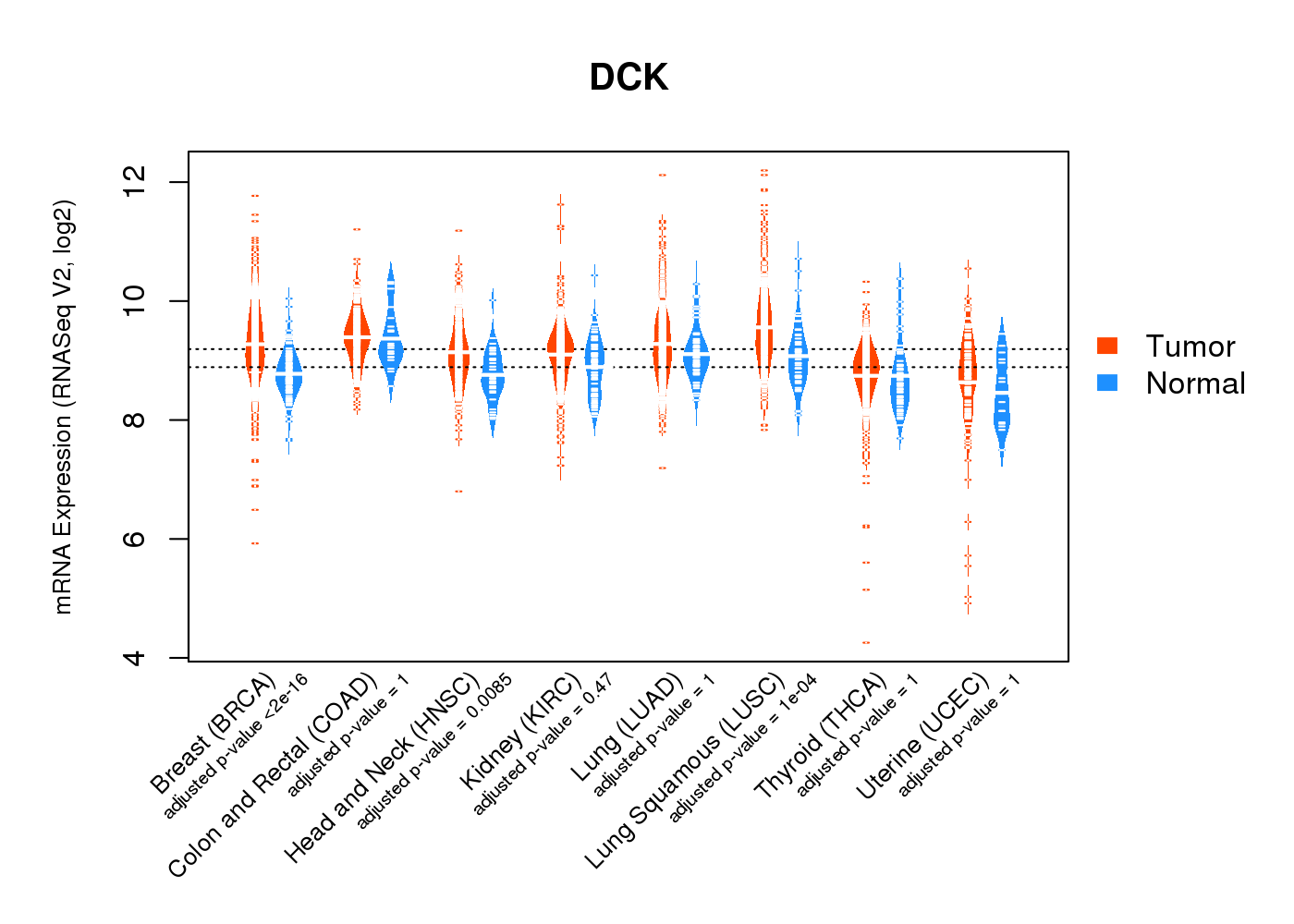 |
| Top |
| * This plots show the correlation between CNV and gene expression. |
: Open all plots for all cancer types
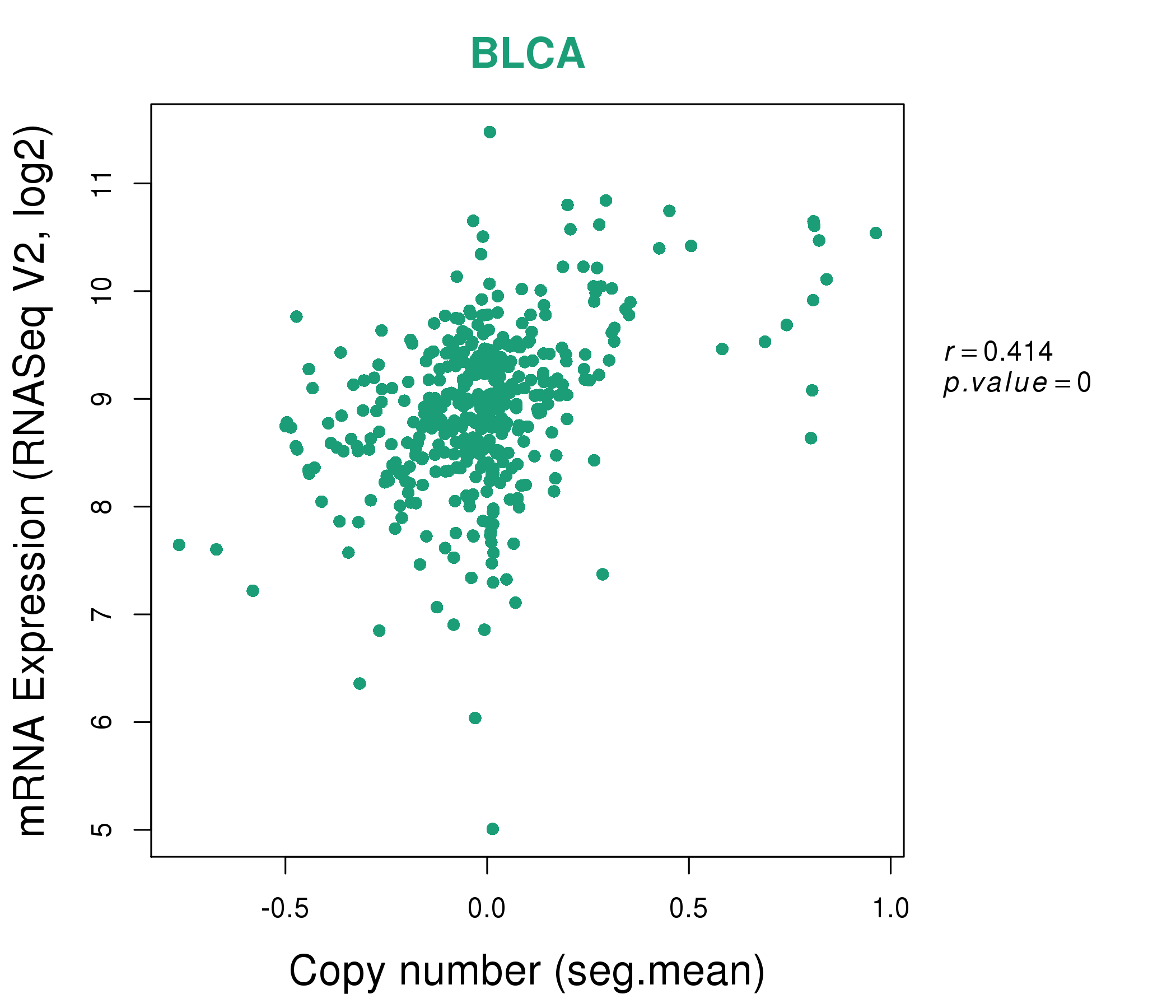 |
|
 |
|
| Top |
| Gene-Gene Network Information |
| * Co-Expression network figures were drawn using R package igraph. Only the top 20 genes with the highest correlations were shown. Red circle: input gene, orange circle: cell metabolism gene, sky circle: other gene |
: Open all plots for all cancer types
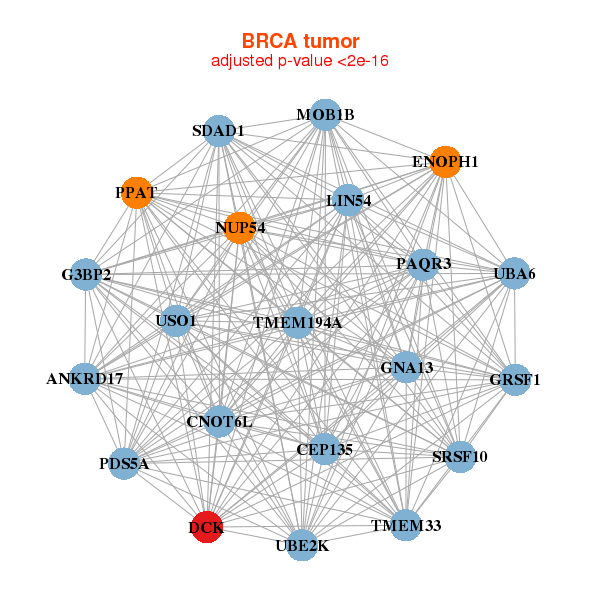 |
| ||||
| ANKRD17,CEP135,CNOT6L,DCK,ENOPH1,G3BP2,GNA13, GRSF1,LIN54,MOB1B,NUP54,PAQR3,PDS5A,PPAT, SDAD1,SRSF10,TMEM194A,TMEM33,UBA6,UBE2K,USO1 | ANKRD13C,ANP32E,CGGBP1,DCK,DEK,GNA13,GOLT1B, HSPA13,LRRC40,MIER1,NUS1,PAPD4,BLOC1S6,RAP2C, RNGTT,SMNDC1,SPAST,TMX1,TRAM1,TROVE2,UFM1 | ||||
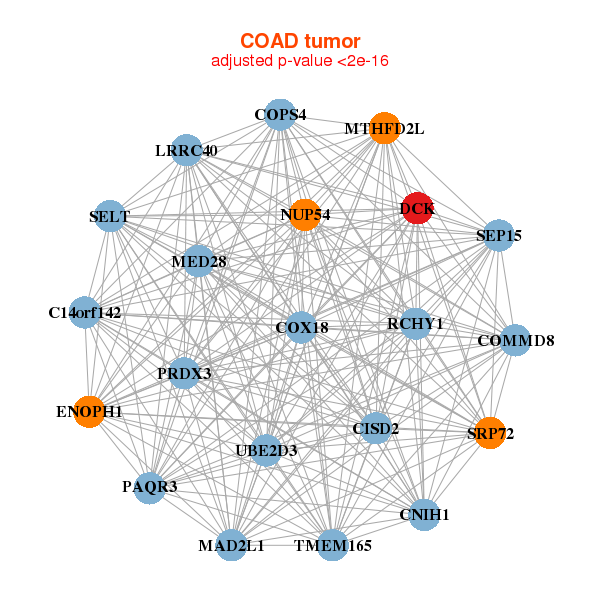 |
| ||||
| C14orf142,CISD2,CNIH1,COMMD8,COPS4,COX18,DCK, ENOPH1,LRRC40,MAD2L1,MED28,MTHFD2L,NUP54,PAQR3, PRDX3,RCHY1,SELT,SEP15,SRP72,TMEM165,UBE2D3 | BUB3,MZT1,C5orf28,DCK,E2F5,ERLEC1,FAM49B, GABPB1,HAUS1,MRPS14,NIF3L1,PDCD2,PMS2P1,POLB, PRKRIR,PRPSAP2,RBBP4,SLBP,TANK,TFAM,UNC50 |
| * Co-Expression network figures were drawn using R package igraph. Only the top 20 genes with the highest correlations were shown. Red circle: input gene, orange circle: cell metabolism gene, sky circle: other gene |
: Open all plots for all cancer types
| Top |
: Open all interacting genes' information including KEGG pathway for all interacting genes from DAVID
| Top |
| Pharmacological Information for DCK |
| DB Category | DB Name | DB's ID and Url link |
| * Gene Centered Interaction Network. |
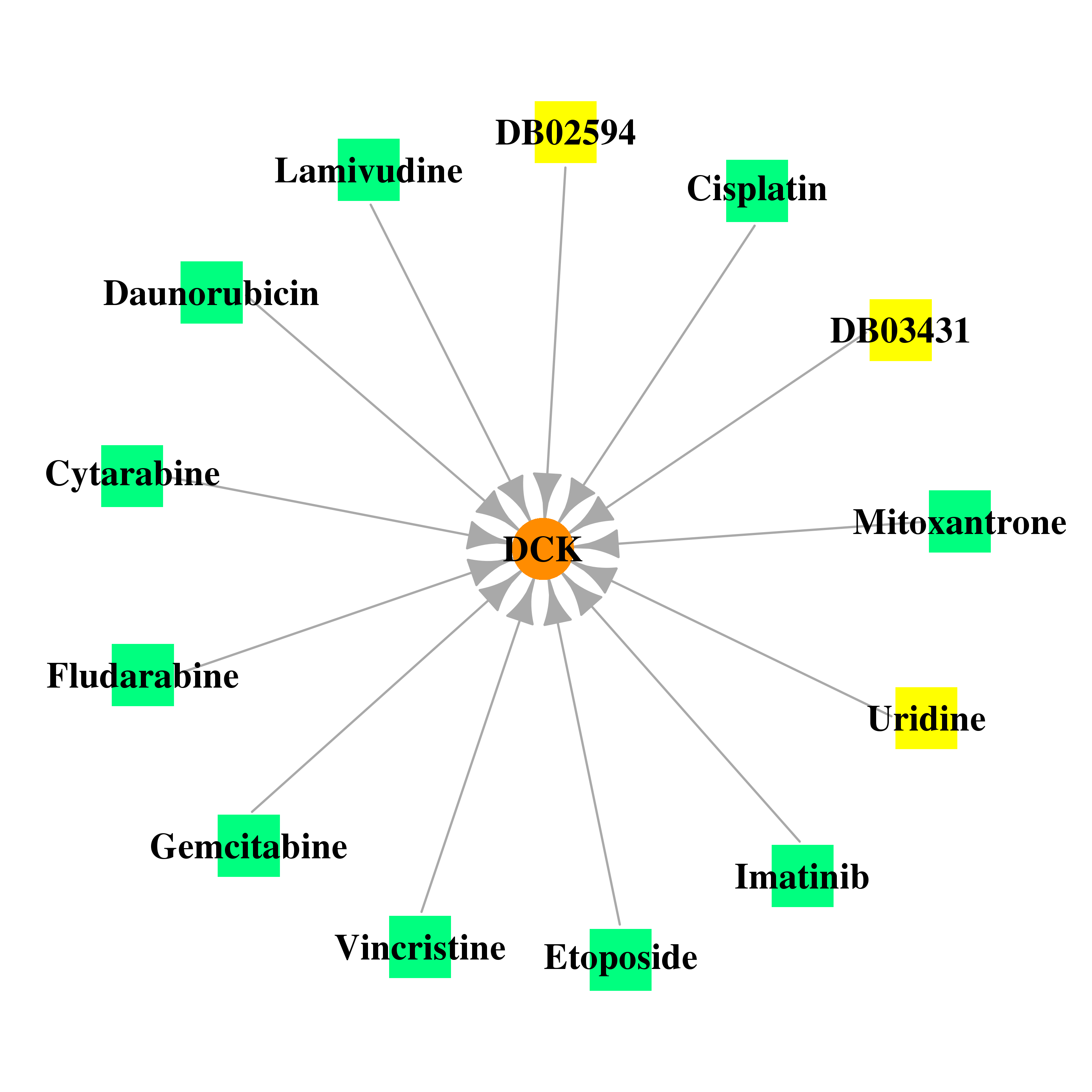 |
| * Drug Centered Interaction Network. |
| DrugBank ID | Target Name | Drug Groups | Generic Name | Drug Centered Network | Drug Structure |
| DB01073 | deoxycytidine kinase | approved | Fludarabine | 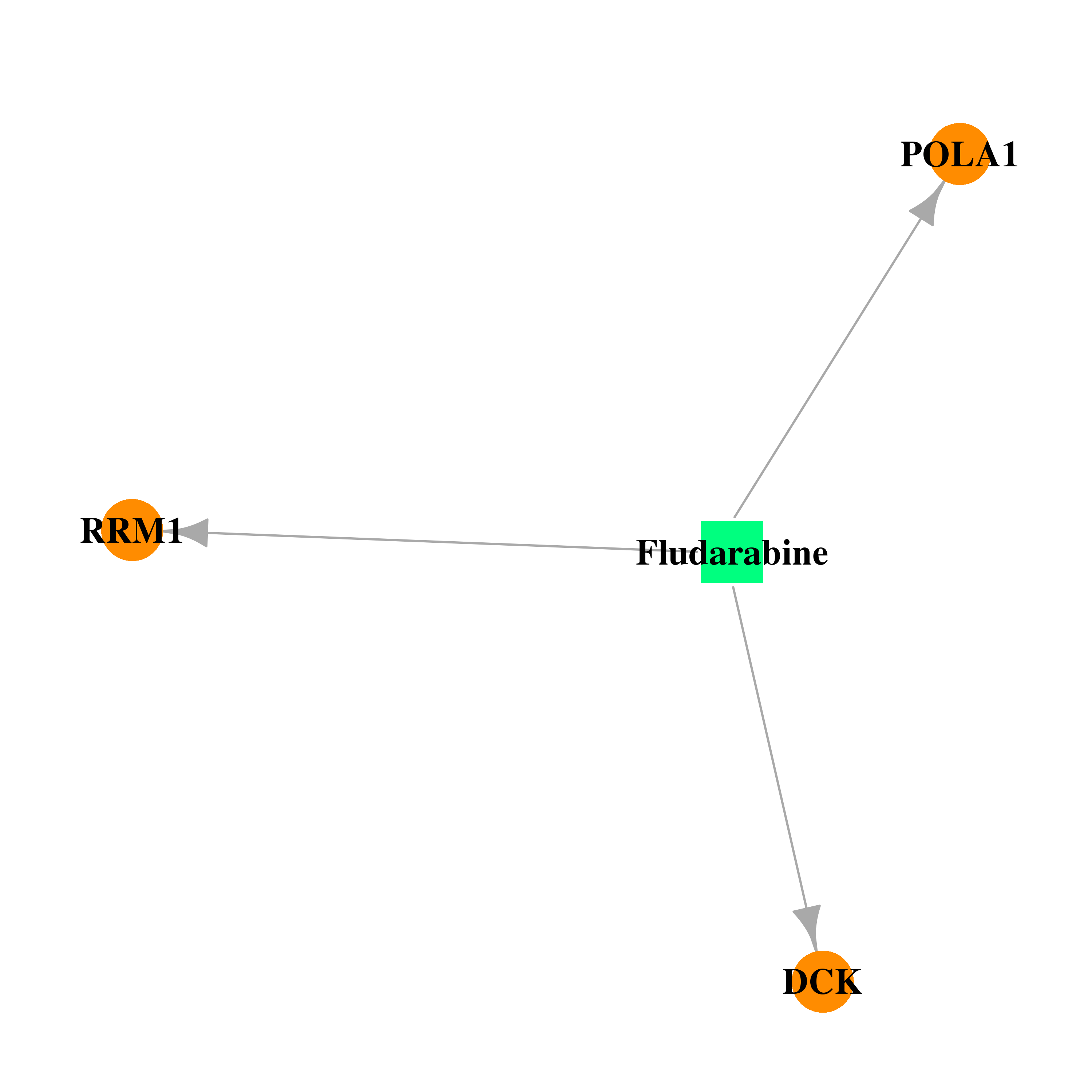 | 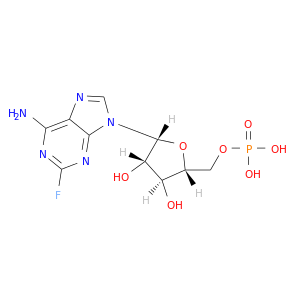 |
| DB02594 | deoxycytidine kinase | experimental | 2'-Deoxycytidine | 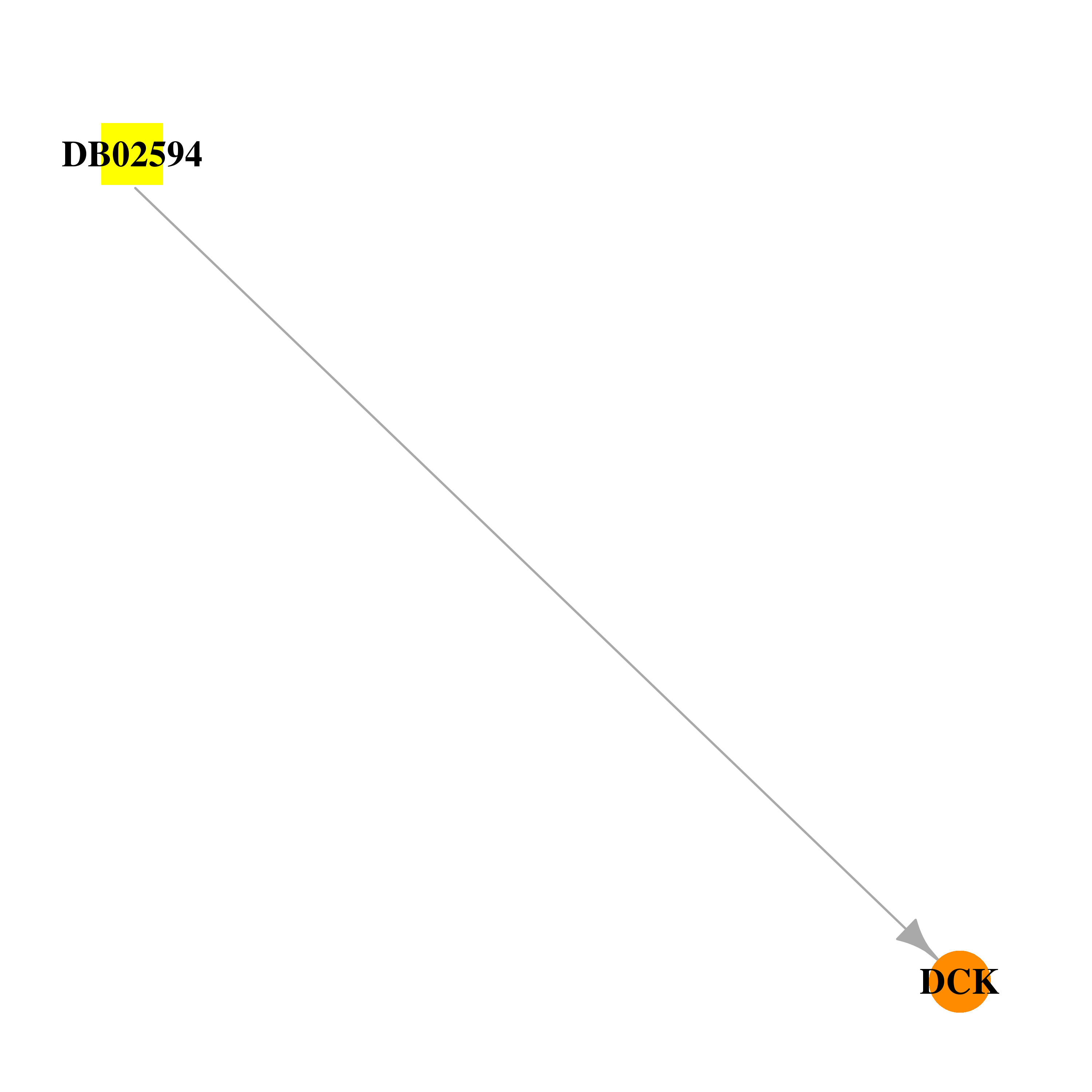 | 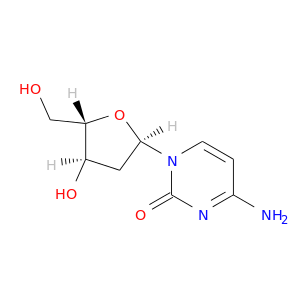 |
| DB03431 | deoxycytidine kinase | experimental | Adenosine-5'-Diphosphate | 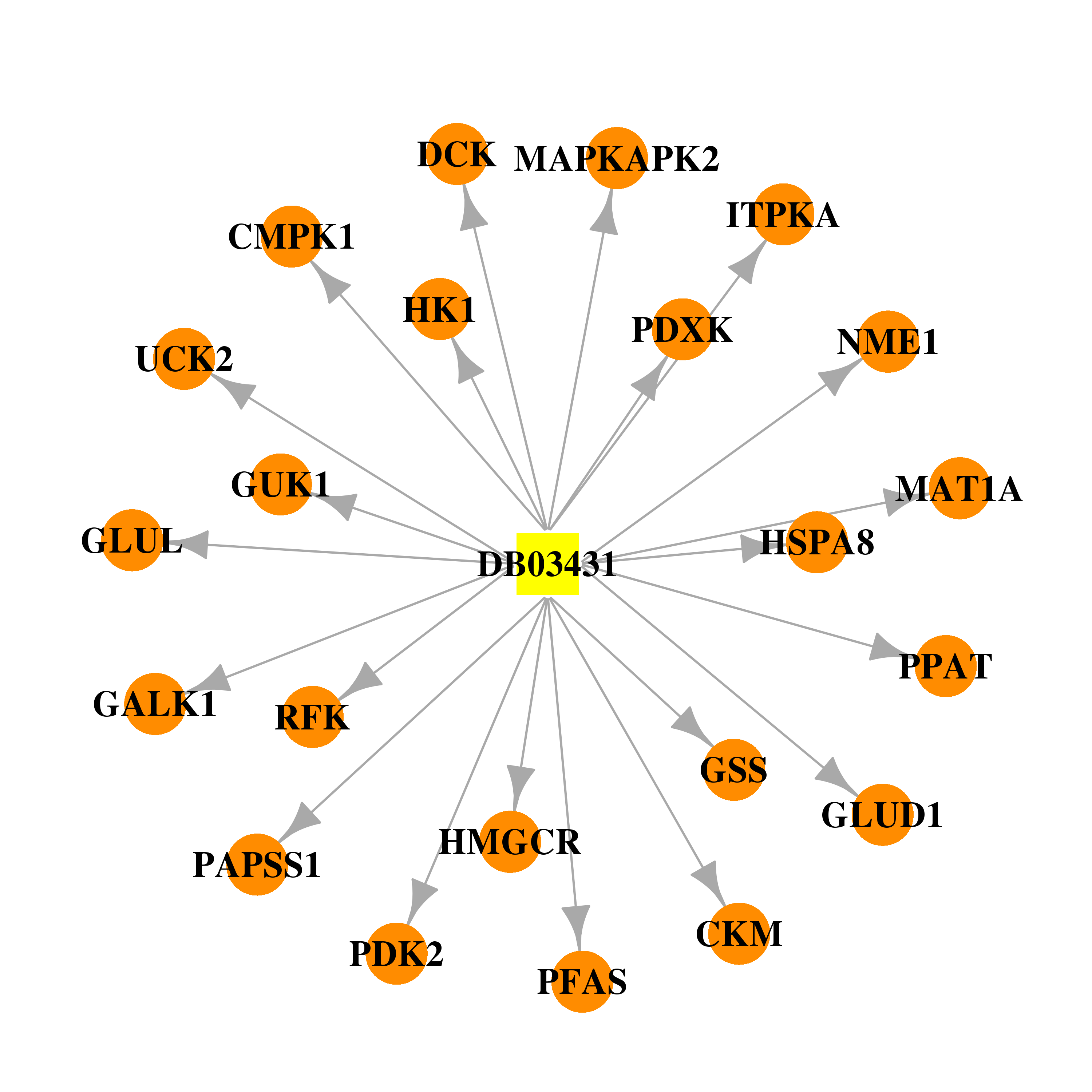 |  |
| DB00709 | deoxycytidine kinase | approved; investigational | Lamivudine |  | 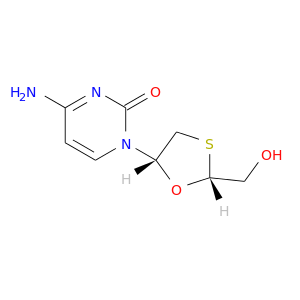 |
| DB00694 | deoxycytidine kinase | approved | Daunorubicin | 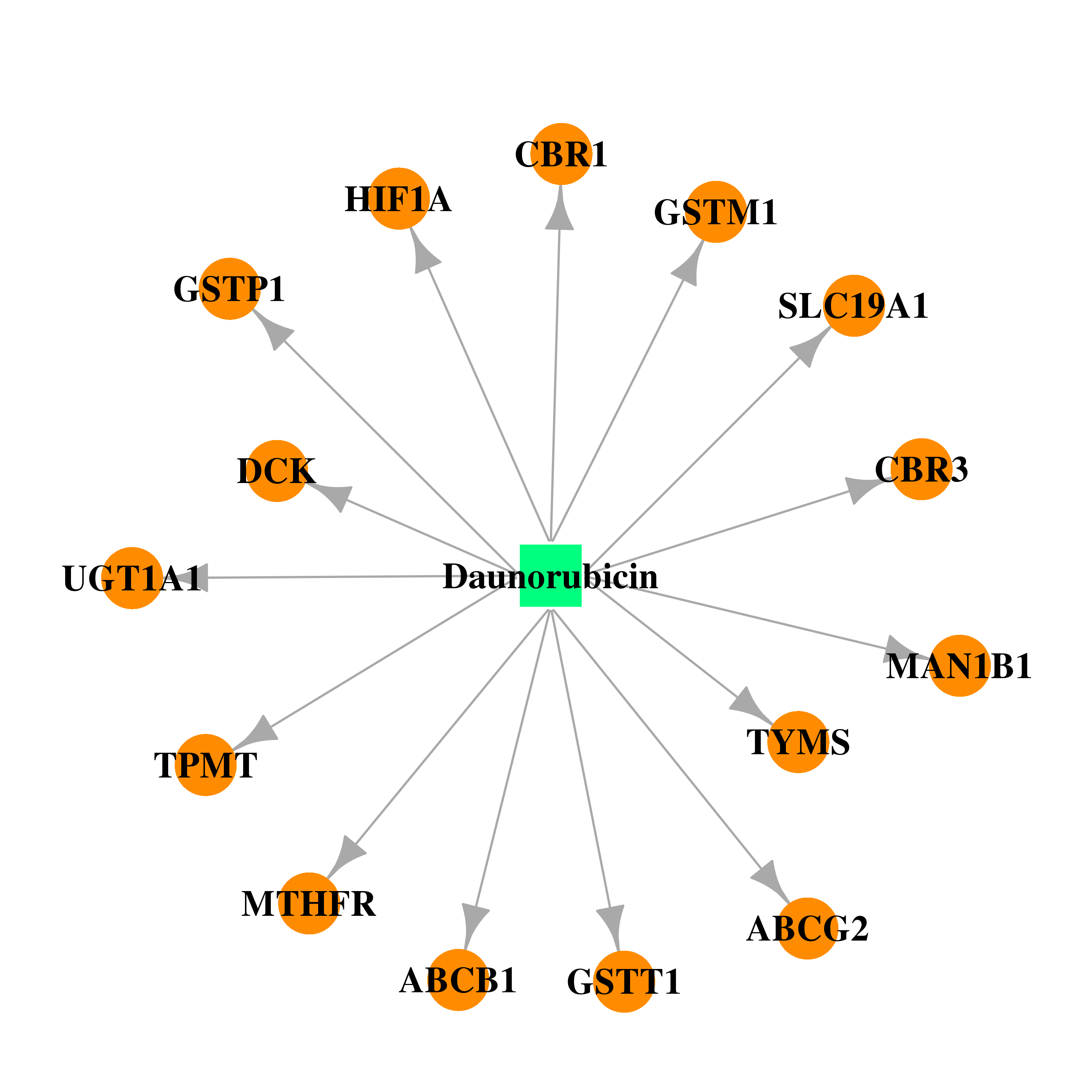 |  |
| DB00773 | deoxycytidine kinase | approved | Etoposide |  |  |
| DB00619 | deoxycytidine kinase | approved | Imatinib | 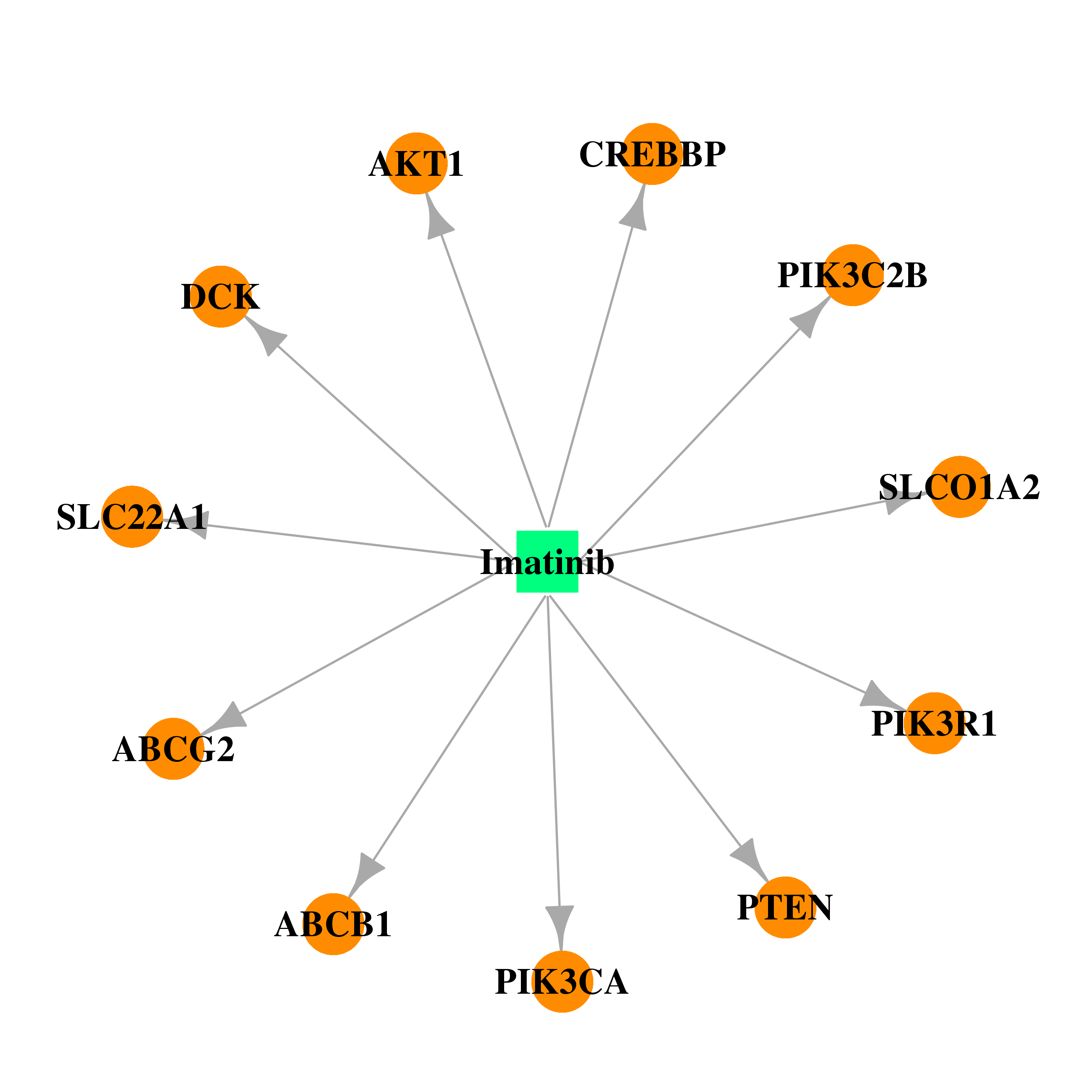 |  |
| DB01204 | deoxycytidine kinase | approved; investigational | Mitoxantrone |  | 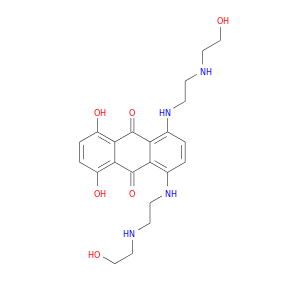 |
| DB00541 | deoxycytidine kinase | approved; investigational | Vincristine | 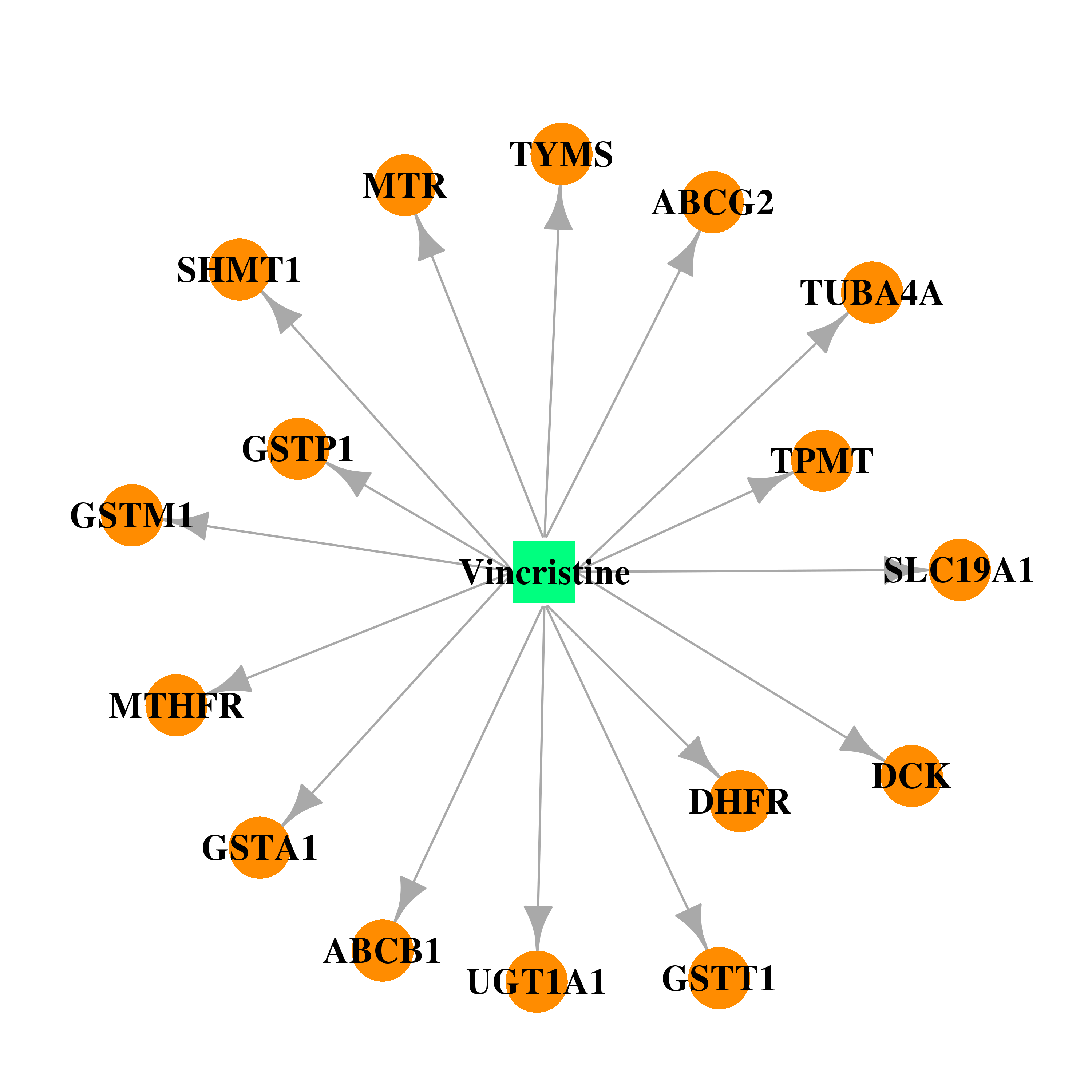 | 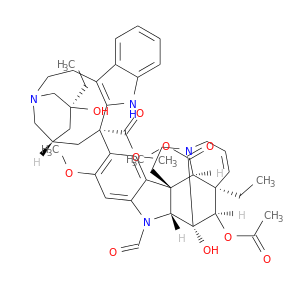 |
| DB02745 | deoxycytidine kinase | experimental | Uridine |  |  |
| DB00987 | deoxycytidine kinase | approved; investigational | Cytarabine |  | 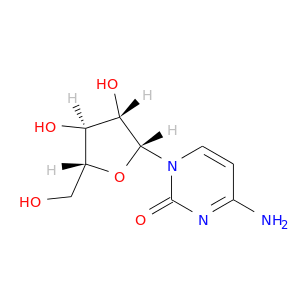 |
| DB00441 | deoxycytidine kinase | approved | Gemcitabine |  | 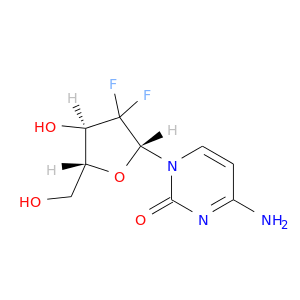 |
| DB00515 | deoxycytidine kinase | approved | Cisplatin |  |  |
| Top |
| Cross referenced IDs for DCK |
| * We obtained these cross-references from Uniprot database. It covers 150 different DBs, 18 categories. http://www.uniprot.org/help/cross_references_section |
: Open all cross reference information
|
Copyright © 2016-Present - The Univsersity of Texas Health Science Center at Houston @ |






